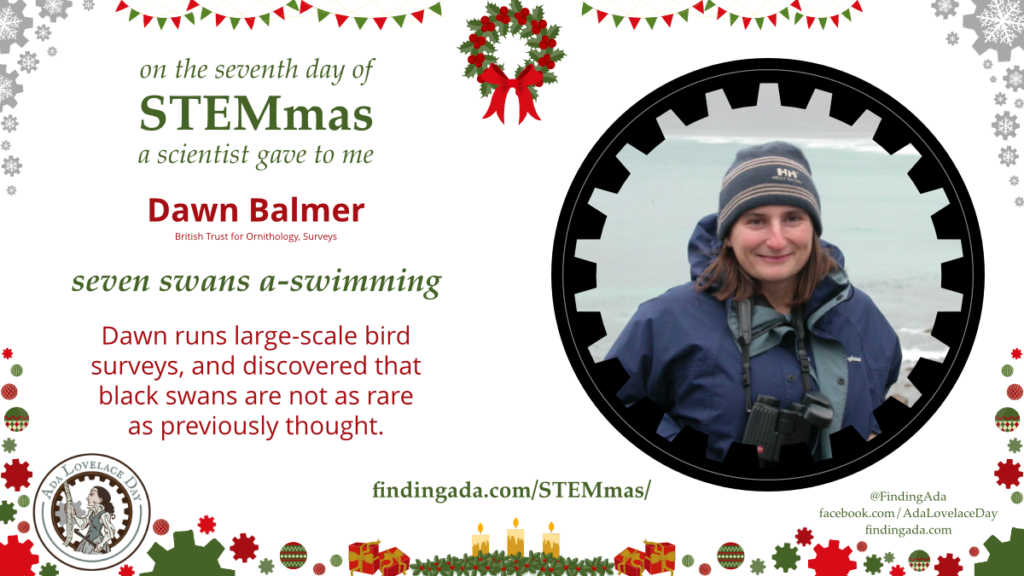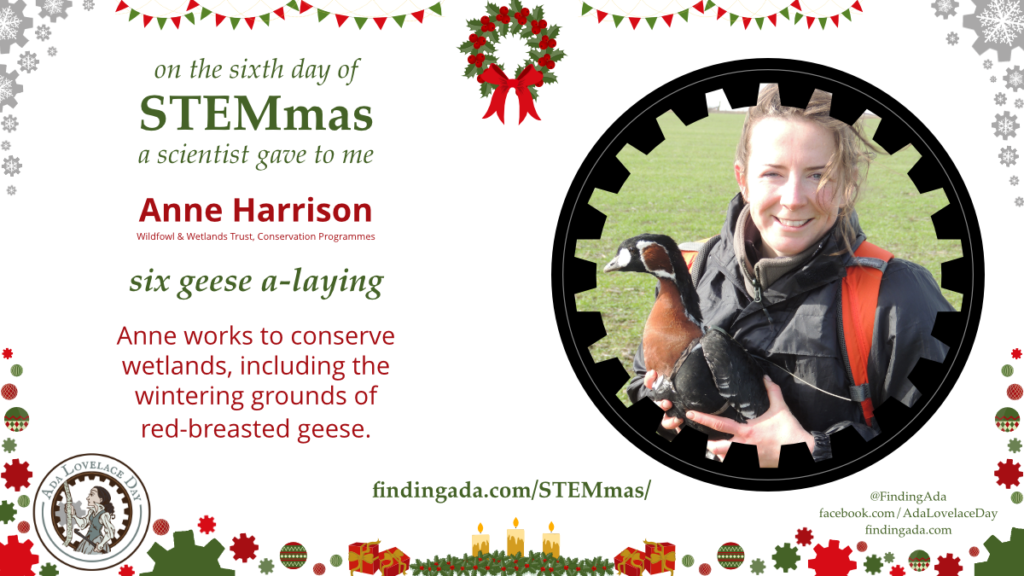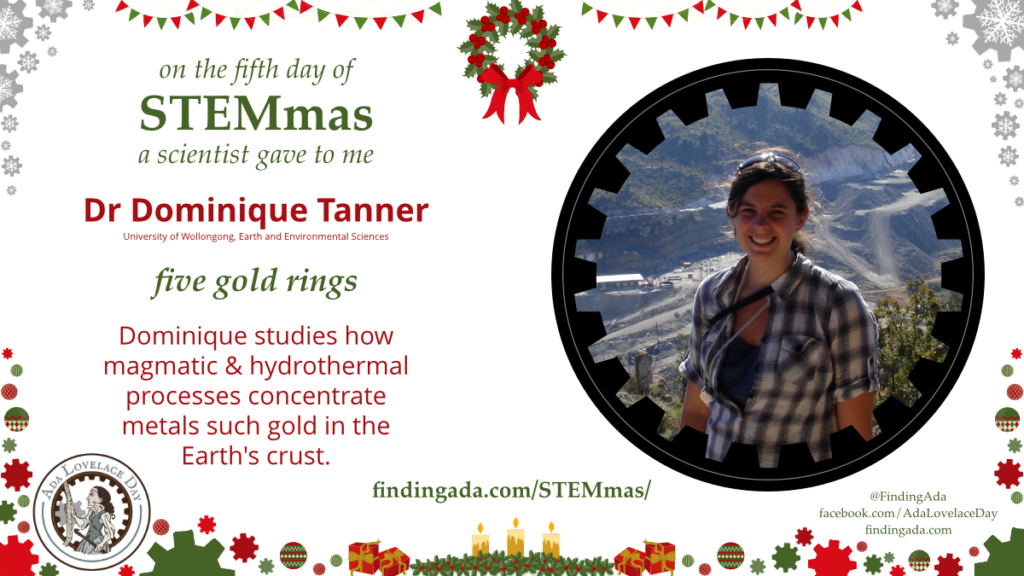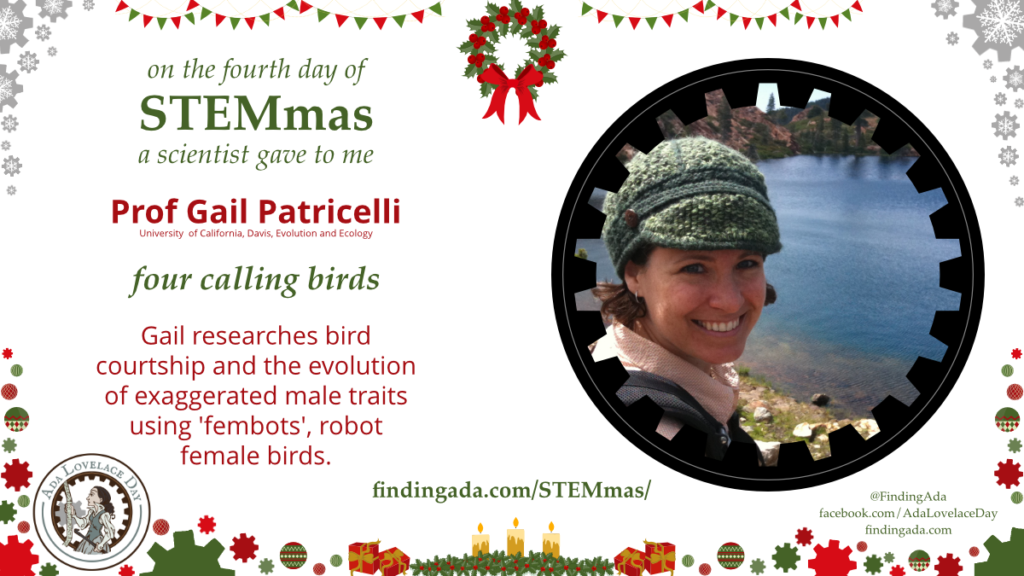Our seventh splendid woman in STEM is Dawn Balmer, who discovered that black swans really aren’t as rare as we think they are.
Dawn runs several large-scale bird surveys, including the Wetland Bird Survey, Breeding Bird Survey, BirdTrack, Waterways Breeding Bird Survey and Heronries Census, and has a “long-term interest in migration and movements of birds and population dynamics”. She was the co-ordinator for the Bird Altas 2007–11, the “most in-depth survey of the breeding and distribution of Britain’s birds ever carried out”, which discovered that there are at least 37 pairs, and maybe as many as 111 pairs, of black swans breeding in the wild in the UK.
Twitter: @debalmer




